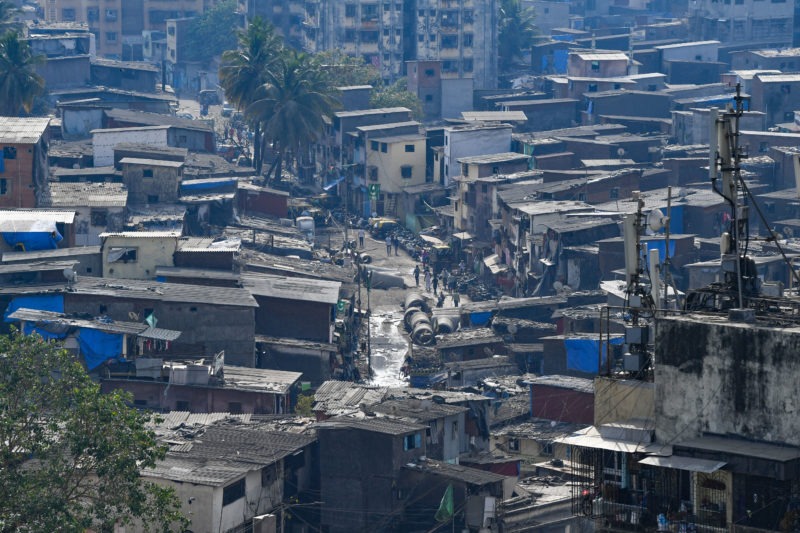Sitting ducks: fear stalks India’s biggest slum as virus cases inch up
Social distancing is near impossible for the roughly one million people in the Dharavi slum in Mumbai (INDRANIL MUKHERJEE)
Mumbai (AFP) – Amidst the clogged drains and overflowing garbage dumps of Mumbai’s Dharavi — one of Asia’s largest slums — coronavirus fears are growing, and residents say they are powerless to stop the spread of the disease.
The warren of narrow alleys in India’s financial capital — made famous by the 2008 Oscar-winning film “Slumdog Millionaire” — is home to around a million people, many of whom work as security guards or domestic workers in upmarket neighbourhoods nearby.
The Indian government announced a lockdown across the country last month, ordering citizens to stay home in the hope that this would contain the spread of the virus.
But Dharavi’s crowded streets mean social distancing is near impossible for the people who live there — even if they only leave home to buy food.
The glaring lack of proper infrastructure forces many residents to use public bathrooms, making the area a fertile ground for COVID19 to spread.
Five coronavirus cases have been confirmed among the cramped tin-roofed shanties, flats and small factories that make up Dharavi, including two fatalities.
No one “wants to live in haphazard conditions where 80 people have to share a toilet in the morning”, said Vinod Shetty, director of the non-profit ACORN Foundation.
But “survival in Dharavi is based on being able to live that close. If everyone asked for six feet distance we would need to have an area three times the size of Dharavi”, he told AFP.
Its population density is thought to be 270,000 per square kilometre, according to the World Economic Forum.
As municipal workers fumigated the slum on Monday morning, anxious residents told AFP they felt like sitting ducks as the number of infections inches upwards.
“What can we do? We are sanitising our houses while being locked inside,” said Abdul Kadir, who works at a provisions store.
“We are trying to be safe in our houses,” the 48-year-old added.
Sanitation is dire in the neighbourhood, whose residents have long criticised the government for failing to improve infrastructure.
Now officials are hoping that a rushed plan to create “containment zones” across Mumbai, including in Dharavi, will limit the spread of the virus.
One of those who died was a sanitation worker with the municipality who lived elsewhere but worked in the slums.
Police have erected barricades near the areas where the victims lived or worked, to prevent outsiders from entering.
Officials have also repurposed an empty sports stadium, turning it into a 300-bed quarantine facility, and taken over a private hospital to treat coronavirus patients.
“We are preparing in advance and anticipating a huge crisis… if the virus spreads”, said Kiran Dighavkar, assistant commissioner of the Mumbai city authority.
– Stigma –
A fear of being ostracised is also prompting many people to evade questioning, he told AFP, underlining the scale of the challenge facing officials as they try to track down victims’ contacts and get them tested.
“Ill-informed people are afraid to disclose whom they met for fear of stigma. We are trying to take them into confidence to establish contact tracing,” he said.
But some residents said they worried it was too little too late in the slum.
“If the cases start increasing, they will increase in very large numbers,” said Anil Sharma, who works as a security guard.
As people emerged from their homes to buy vegetables and milk, with one man even stopping for a shave at a roadside barber, Sharma told AFP the sight of the crowds — although smaller than usual — made him very anxious.
“I am very afraid,” he said.
Disclaimer: Validity of the above story is for 7 Days from original date of publishing. Source: AFP.


